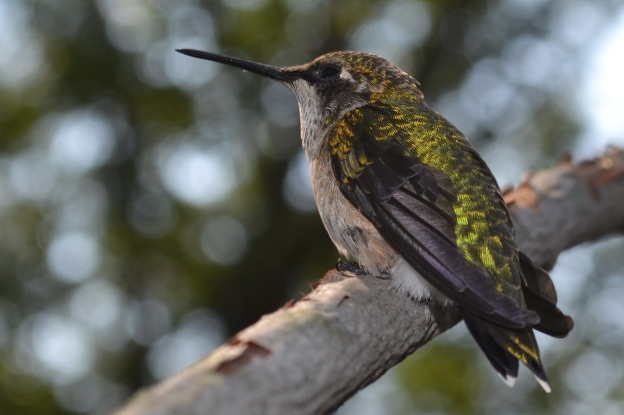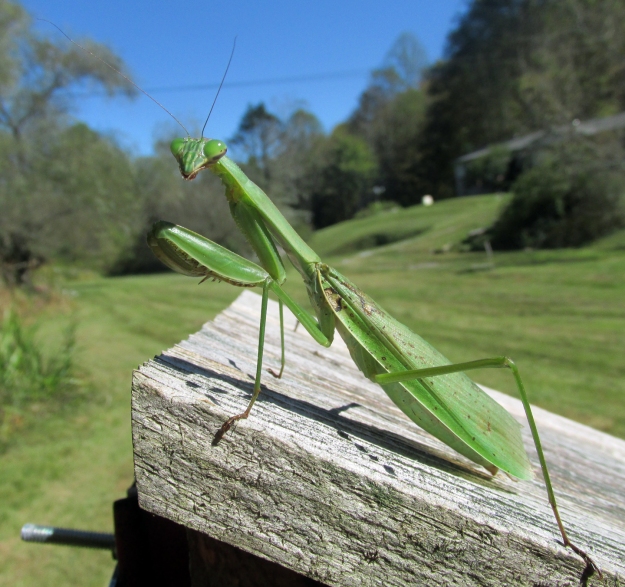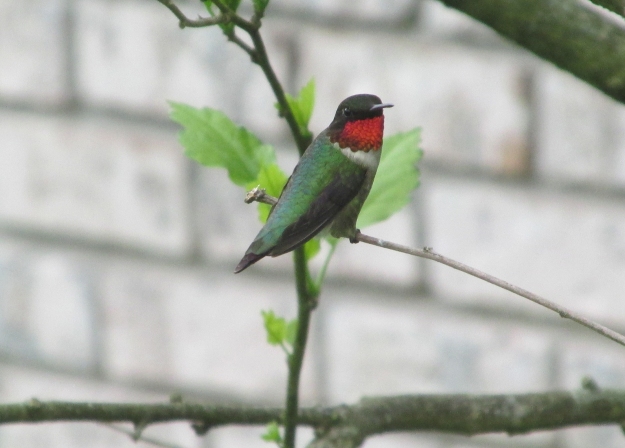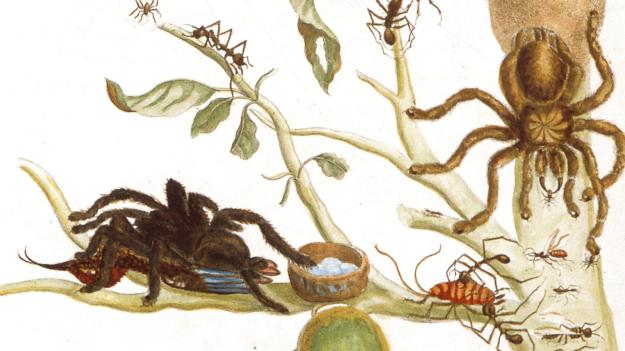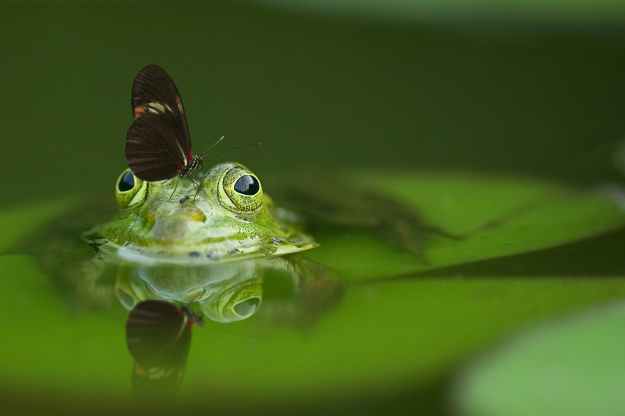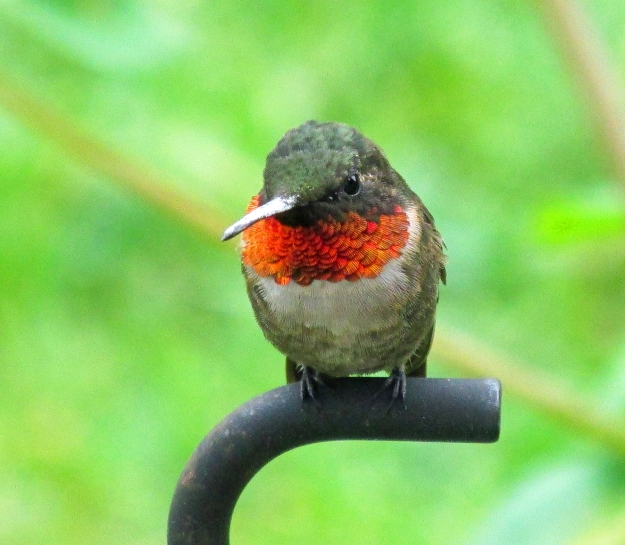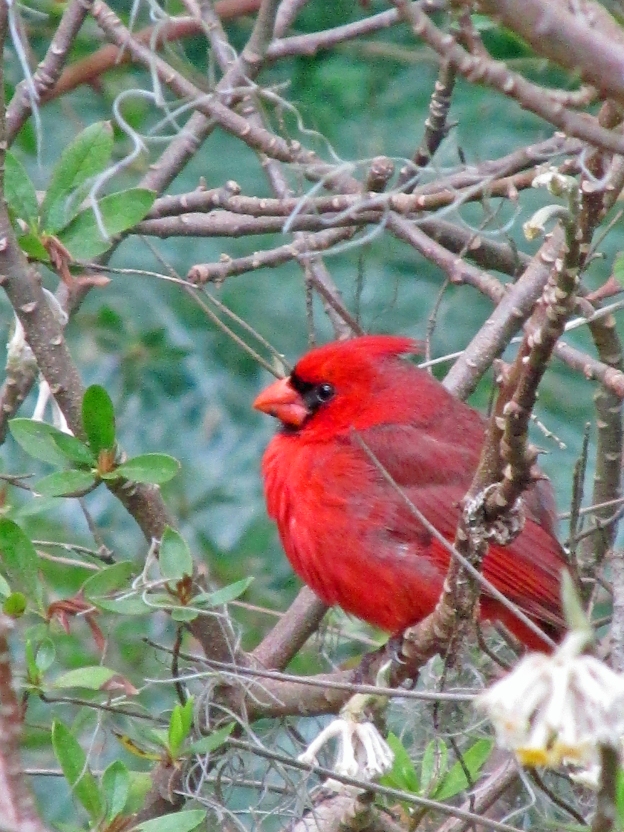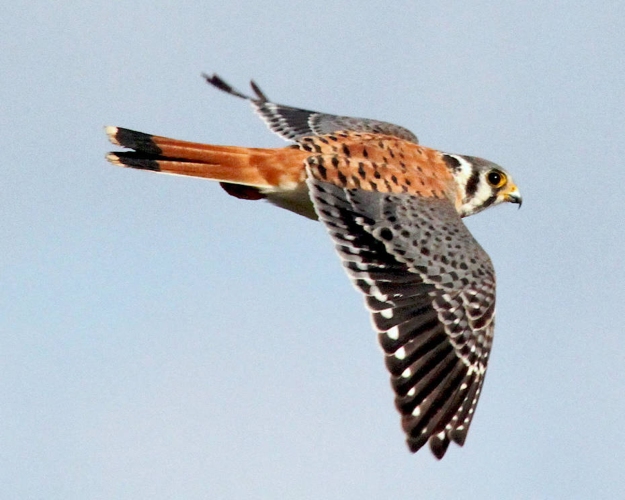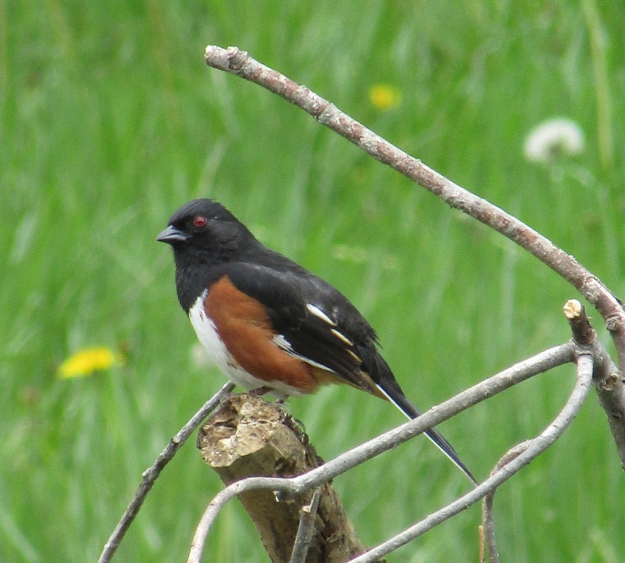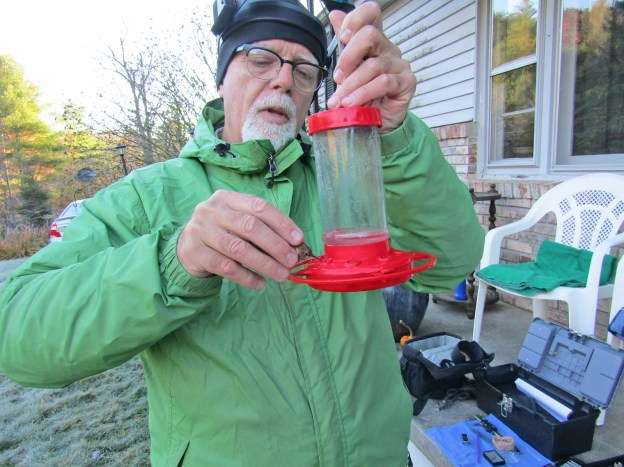
Photo Courtesy of Eli Mulligan • A rufous hummingbird, named Little Green by her human landlord, poses for a snapshot. Rufous hummingbirds routinely migrate through the eastern United States during fall and early winter. Some may spend the entire winter season.
I recently heard from readers from as far afield as Atlanta, Georgia, and Greene, Rhode Island. They were writing to share stories about over-wintering hummingbirds at their respective homes. But the first report I received this year came from a much closer source.
Darlene Kerns, a Unicoi resident, contacted me on Facebook two days before Christmas.
“We live in Unicoi and I just had to share with you,” Darlene wrote. “We had a hummingbird feeding this morning. It’s 22 degrees!”
She went on to tell me that there have actually been two winter hummingbirds at her feeders.
“We usually bring the feeders in by mid-October but kept one out with fresh food because of continually seeing hummingbirds feeding,” she said.
That’s often how it starts. It’s easy to miss these different hummingbird species when they mingle with the abundant fall ruby-throated hummingbirds, but they tend to stand out once the last of the ruby-throated hummingbirds depart.
“I’m just amazed that these sweet little birds are still around in this cold weather,” Darlene wrote in her message.
Almost every year since beginning to write this column, I have been contacted by others who, much like Darlene, are stunned to glimpse a hummingbird at their home in the winter months. I’ve penned several articles about the phenomenon of wintering hummingbirds. As we are now mid-way through the 2021-2022 winter season, I wasn’t too surprised to receive more confirmation that these tiny birds continue to surprise us.
I replied to Darlene’s Facebook message by asking her if the hummingbird at her home had an abundance of brown feathers in its plumage. I also suggested she use Google to research “rufous hummingbird.”
She did as I suggested and discovered the identity of her visitors.
“Yes! It is the rufous hummingbird,” Darlene confirmed after looking at photos online.
Through the years, I have seen several of these seemingly out-of-place hummingbirds. I’ve received reports from such far-flung locales as Ohio and New York. Some of them remain at their host’s feeders for a brief stay of a few days or a couple of weeks, but some of these hummingbirds have extended their stay for several months, lingering throughout the winter months before eventually departing in February or March. I’ve even hosted rufous hummingbirds twice at my own home.
The big question concerns whether these hummingbirds are truly lost and out of place. The answer, based on everything I have managed to learn, is that these hummingbirds are precisely where they want to be. For still unknown reasons, some of these western hummingbirds make a migration swing through the eastern United States. The vast majority turn out to be a species known as the rufous hummingbird.
I’ll now turn the spotlight onto the individual stories of Eli Mulligan and Pam Price.
Eli Mulligan emailed me about a rufous hummingbird that recently departed from his home in New England.
“I am not sure if you are still following the wintering rufous hummingbirds,” Eli wrote in his email. “If so, I have an interesting story for you.”
He went on to mention that he is a resident of Greene, Rhode Island.
“This year, we had a confirmed rufous hummingbird show up in mid-September, mingling with the remaining rubies (ruby-throated hummingbirds),” he wrote. “Well, this little rufous decided to stay for some time. She literally just left us a day ago on the morning of Jan. 18, 2022. During her stay, she had endured heavy rains, high winds, snow and even routine blustery cold nights with temperatures falling as low as 1 degree and wind chills of minus 15 degrees.”
Eli described his visitor’s routine.
“While she was here, I would get up before the sun, every morning and put out fresh nectar for her,” he wrote. “When we hit the colder days, I invested in a plug-in heated feeder and a mushroom-shaped heat lamp that I would hang the feeders underneath.This definitely helped her on many December and January mornings as she camped right underneath to warm herself.”
Eli said he caught numerous glimpses of her feed from nearby suet cakes most likely to supplement her protein needs during the colder days,” he wrote.
“What an incredibly resilient bird,” Eli wrote. “We ended up naming her ‘Little Greene.’”
Eli said that his recently departed rufous hummingbird was absolutely one of the most remarkable birds that he has ever seen or known.
“She will definitely be missed,” he concluded.
Eli created postings throughout Little Greene’s visit on eBird regarding his observations and general information about her while she remained at his home.”
Readers can look up the name Eli Mulligan on eBird and views postings and photos of Little Greene.
“This is truly an amazing creature and I just wanted to share that with those who would have an appreciation for her,” Eli wrote.

Photo Courtesy of Pam Price • This rufous hummingbird has been spending time at a home near Atlanta, Georgia.
Pam Price in Atlanta, Georgia, found out how to contact me when a column I’d previously written on rufous hummingbirds popped into her news feed.
She wrote in her email that she has had a little rufous hummingbird visiting her feeder since Dec. 14.
As of the Jan. 23, the hummingbird was still present.
“I worry about it constantly as I wonder where it is getting any bugs,” she said. “Temperatures have been in the 20s.”
She even took steps to ensure the bird’s safety when she went on vacation.
“I took a feeder to my neighbor next door and made her promise to keep up the feeder and bring in at night so it does not freeze,” Pam wrote.
Her recent visitor is not Pam’s first experience with rufous hummingbirds.
She noted that she had two rufous hummingbirds banded in her backyard when she lived in the Tallahassee, Florida, area.
“So I am familiar with that process,” she wrote. “I did post on Ebird alerts with pictures but have not tried to find someone to band her as she does not visit as frequently as other hummers.”
For those who do worry about rufous hummigbirds braving cold winter temperatures, keep in mind that the species spends the nesting season from Baja California to chilly Alaska in its native range. Hummingbirds can also enter torpor, an adaptation that lets them slow down their metabolism when conditions are too exacting.
I enjoyed hearing from Eli, Pam and Darlene. Winter hummingbirds, while always a delightful surprise for their hosts, no longer shock long-time birders. We’ve grown to expect them. If anything, I’d be surprised more by the absence of reports of these tiny wonders during the bleak winter season. If any readers are still hosting lingering hummingbirds at their feeders, I’d love to hear their stories. Email me at ahoodedwarbler@aol.com.








